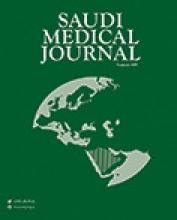Abstract
Pulmonary fibrosis is characterized by the accumulation of excessive connective tissue in the lungs. Its causes include chronic administration of some drugs for example bleomycin, cyclophosphamide, amiodarone, procainamide, penicillamine, gold and nitrofurantoin; exposure to certain environmental factors such as gases, asbestos and silica and bacterial or fungal infections. Some systemic diseases also predispose to the disease for example rheumatoid arthritis and systemic lupus erythematosus. The disease is associated with release of oxygen radicals and some mediators such as tumor necrosis factor-alpha TNF-alpha, transforming growth factor-beta TGF-beta, PDGF, IGF-I, ET-I and interleukins 1, 4, 8 and 13. The symptoms of the disease include dyspnea, non-productive cough, fever and damage to the lung cells. It is diagnosed with the aid of chest radiography, high resolution computed tomographic scanning and the result of pulmonary function tests. Drug-induced pulmonary fibrosis may involve release of free oxygen radicals and various cytokines for example IL-Ibeta and TNF-alpha via activation of nuclear transcription factor NF-beta as in the case of bleomycin and mitomycin or via release of TGF-beta as in case of tamoxifen or via inhibition of macrophages' and lymphocytes' phospholipases as in the case of amiodarone with the resultant accumulation of phospholipids and reduction of the immune system.
- Copyright: © Saudi Medical Journal
This is an open-access article distributed under the terms of the Creative Commons Attribution-Noncommercial-Share Alike 3.0 Unported, which permits unrestricted use, distribution, and reproduction in any medium, provided the original work is properly cited.






